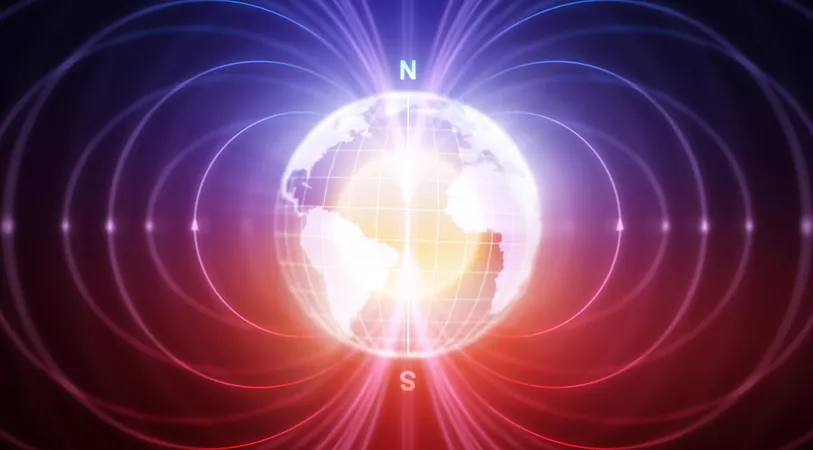
Earth's Magnetic Field and Oxygen Levels: A Surprising Connection Uncovered by NASA
2025-06-30
Author: Charlotte
A Groundbreaking Discovery by NASA Scientists
In a stunning revelation, NASA scientists have unveiled a fascinating link between Earth's magnetic field and fluctuations in atmospheric oxygen levels, a relationship that spans an astonishing 540 million years.
From Toxic Atmosphere to Oxygen Explosion
Earth's early atmosphere was a hostile concoction of carbon dioxide, nitrogen, and water vapor. However, a transformative shift occurred between 2.4 billion and 400 million years ago, when oxygen levels began to rise dramatically. This increase could be attributed to intense volcanic activity or the advent of photosynthetic microorganisms that revolutionized our planet's air supply by converting water into oxygen.
Unraveling Earth's Oxygen History
Scientists can track ancient oxygen levels by examining historic rocks, such as Banded Iron Formations, which hold clues about the atmospheric conditions in which they were formed.
The Age-Old Mystery of Earth's Magnetic Field
The oldest remnants of Earth's magnetic field have been found in rocks dating back 3.7 billion years, particularly in Greenland. This magnetic history is etched into minerals that lock in the orientation and strength of the magnetic field when they solidify from rising magma at tectonic plate boundaries.
A New Understanding of Geodynamo and Atmosphere
The origins of Earth’s magnetic field remain partially shrouded in mystery, but it's generally accepted that the molten iron-nickel alloy in the outer core creates a geodynamo, generating the magnetic field we depend on. Notably, this magnetic field isn't static; it fluctuates over time.
The Groundbreaking Correlation: A Unified Response?
For the first time, a collaborative research team from NASA’s Goddard Space Flight Center and the University of Leeds has discovered that the patterns of Earth's magnetic field and atmospheric oxygen have mirrored each other for nearly half a billion years. "This correlation hints at a potential underlying process that affects both the magnetic field strength and atmospheric oxygen levels," shares Benjamin Mills, a coauthor of the study.
Speculations on the Connection
While the exact mechanisms linking the geodynamo and atmospheric oxygen remain speculative, one theory suggests that the shifting of continents during magnetic fluctuations could alter global weathering rates, impacting oxygen levels.
Looking to the Future
The researchers aim to extend their investigation to longer datasets to see if this trend can be traced even further back in time. They’re also keen to explore the historical abundance of other vital life-supporting chemicals, like nitrogen, to determine if they exhibit similar patterns.









 Brasil (PT)
Brasil (PT)
 Canada (EN)
Canada (EN)
 Chile (ES)
Chile (ES)
 Česko (CS)
Česko (CS)
 대한민국 (KO)
대한민국 (KO)
 España (ES)
España (ES)
 France (FR)
France (FR)
 Hong Kong (EN)
Hong Kong (EN)
 Italia (IT)
Italia (IT)
 日本 (JA)
日本 (JA)
 Magyarország (HU)
Magyarország (HU)
 Norge (NO)
Norge (NO)
 Polska (PL)
Polska (PL)
 Schweiz (DE)
Schweiz (DE)
 Singapore (EN)
Singapore (EN)
 Sverige (SV)
Sverige (SV)
 Suomi (FI)
Suomi (FI)
 Türkiye (TR)
Türkiye (TR)
 الإمارات العربية المتحدة (AR)
الإمارات العربية المتحدة (AR)